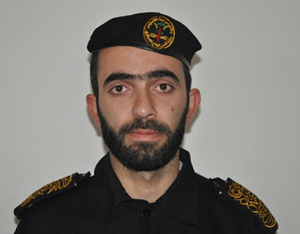But there may be some confusion about the identity of the militant “journalists” killed. (See Nov. 29 update below.)
Carr’s attack on Israel focuses on the deaths of “Mahmoud al-Kumi and Hussam Salama“, whom he describes as having worked as cameramen for Al-Aqsa TV, and of “Mohamed Abu Aisha, director of the private Al-Quds Educational Radio.”
Israel also took responsibility for the killing of “Muhammed Shamalah, commander of Hamas forces in the southern Strip and head of the Hamas militant training programs.” He was “driving a car clearly labelled ‘TV,’ indicating it to be a press vehicle, abusing the protection afforded to journalists,” IDF Blog reports.
Commentary‘s criticism of Carr’s article asserts that this same Muhammed Shamalah, the Hamas commander, is Salama, one of the so-called journalists that the New York Times chastises Israel for killing. Tablet, too, describes a Muhammad Shalamah (or elsewhere Shamalah) as the man Carr wrongly described as a journalist. And the Washington Free Beacon, addressing the different names head-on, states, “Free Beacon sources confirmed that Shamalah and Salama are the same person, despite the different spellings of the name.”
Meanwhile, the Palestinian Center for Human Rights says that the IDF killed “Mohammed Riad Asad Shamallakh, 24, a member of an armed group” on November 19th, and Hussam Mohammed Abdul Rahman Salama of Hamas’s Al Aqsa TV on the 20th. Only adding to the confusion, PCHR has previously been caught repeatedly misdescribing Palestinian fighters as civilians.
Elder of Ziyon explains, “I am not certain that he [Hussam Salama, whom Hamas describes as a ‘mujahid’] is the one the IDF said was the leader of Hamas in southern Gaza.”
Nor are we sure that Carr, or anyone else, was perfectly sure about which person they are talking about.
And he conflates “conflict journalists,” a phrase used to describe civilian journalists covering a war zone, with something entirely different, stating:
Let’s acknowledge that many of those who died were so-called conflict journalists — reporters, photographers and videographers who understood at least some of the associated risks.
But other factors are worth considering…
As a photographer, what do I do when incoming rounds start snapping the air? I have one golden rule: if I can see who is firing, I fire back with my M4 carbine. I serve soldiers, and foremost, they must live. If I cannot see the enemy, I use my camera.
During my last major engagement, I shot 29 bullets and 212 images.
Elder of Ziyon posted a photo showing that one of the purported journalists named by Carr, Mohamed Abu Aisha, is clearly a member of Islamic Jihad’s “military.”
 Is a guy who is photographed in full military uniform a member of a terrorist group’s militia? That would make sense. But we don’t know what Carr thinks, because he doesn’t even mention the issue, and instead lumps the uniformed man together with, for example, “Marie Colvin, who had been reporting for The Sunday Times of London.” Does he really notice no difference?
Is a guy who is photographed in full military uniform a member of a terrorist group’s militia? That would make sense. But we don’t know what Carr thinks, because he doesn’t even mention the issue, and instead lumps the uniformed man together with, for example, “Marie Colvin, who had been reporting for The Sunday Times of London.” Does he really notice no difference?